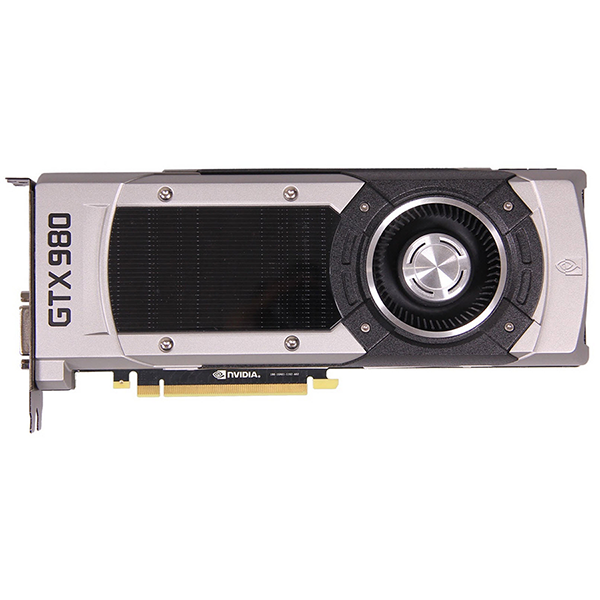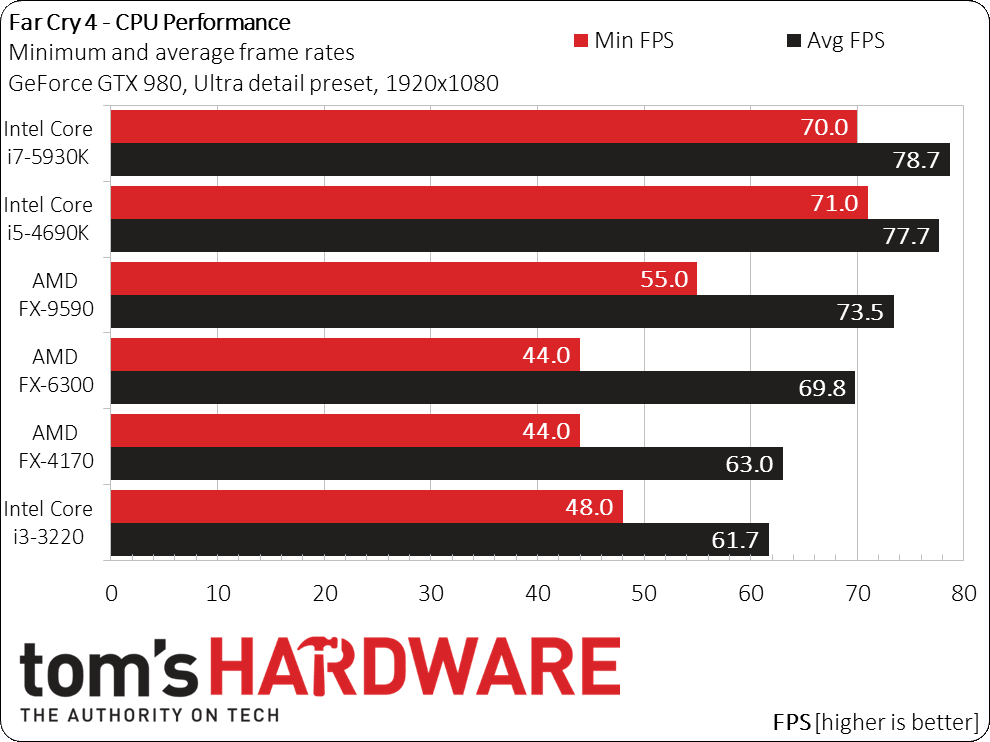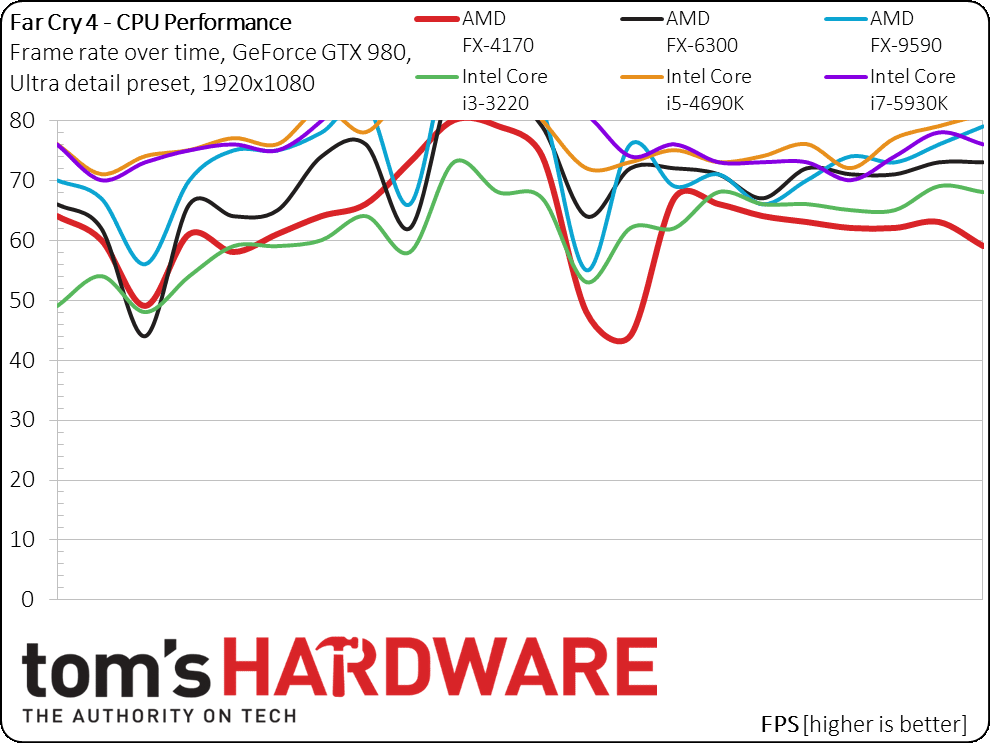Far Cry 4 Game Performance Review
If you were a fan of Far Cry 3’s free roam, hunting and countless side missions, the sequel will be right up your alley. We test a wide array of hardware with this game, and get a good look at how it improves upon its predecessor.
Results: 1440p, 4K And CPU
Ultra Details @ 1440p
We continue climbing the resolution ladder, and our next benchmark is run at 2560x1440:
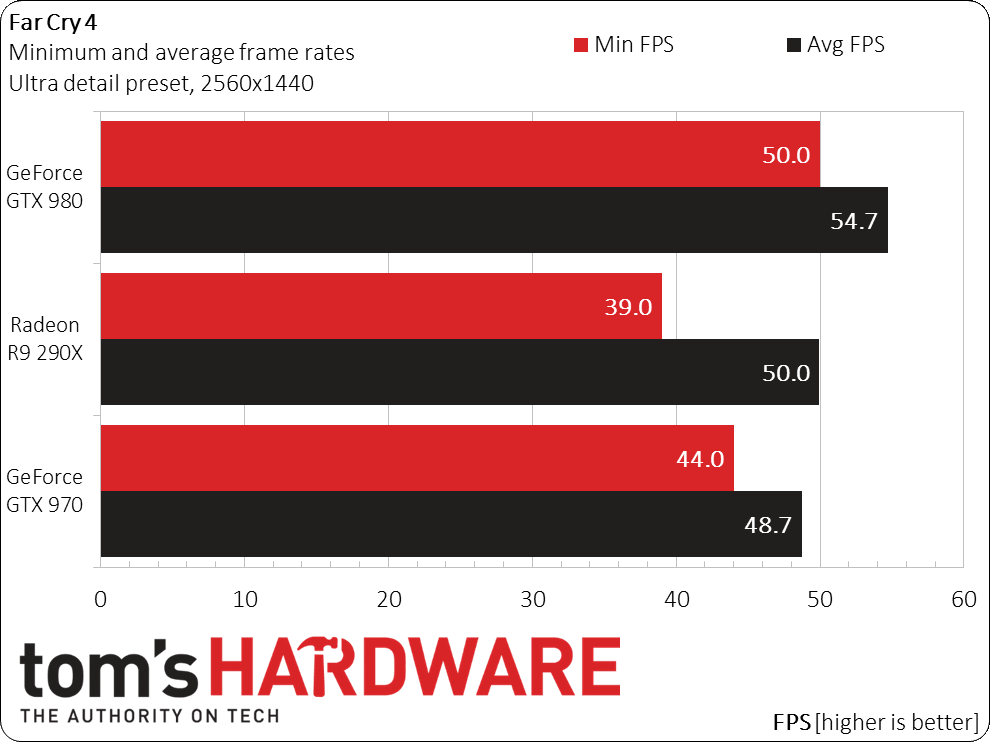
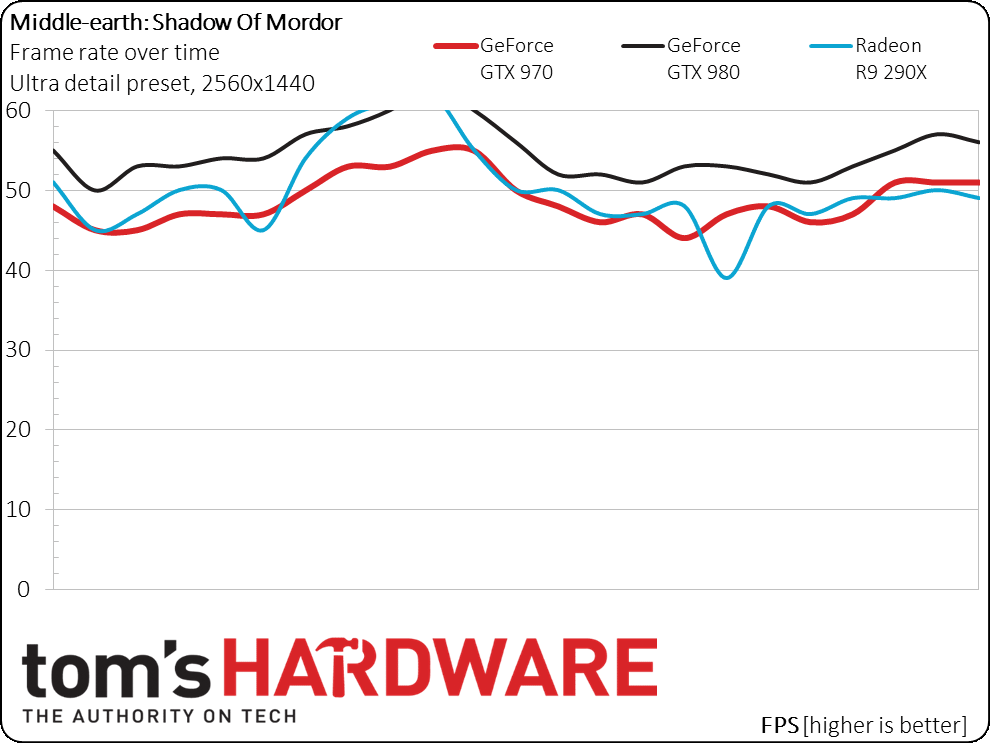
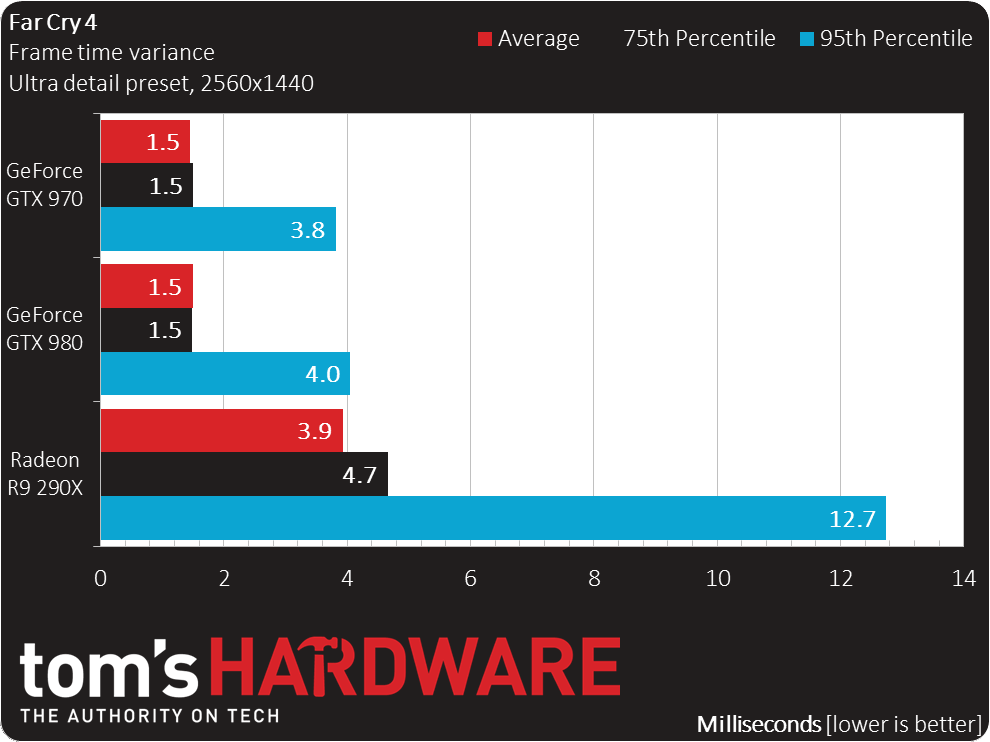
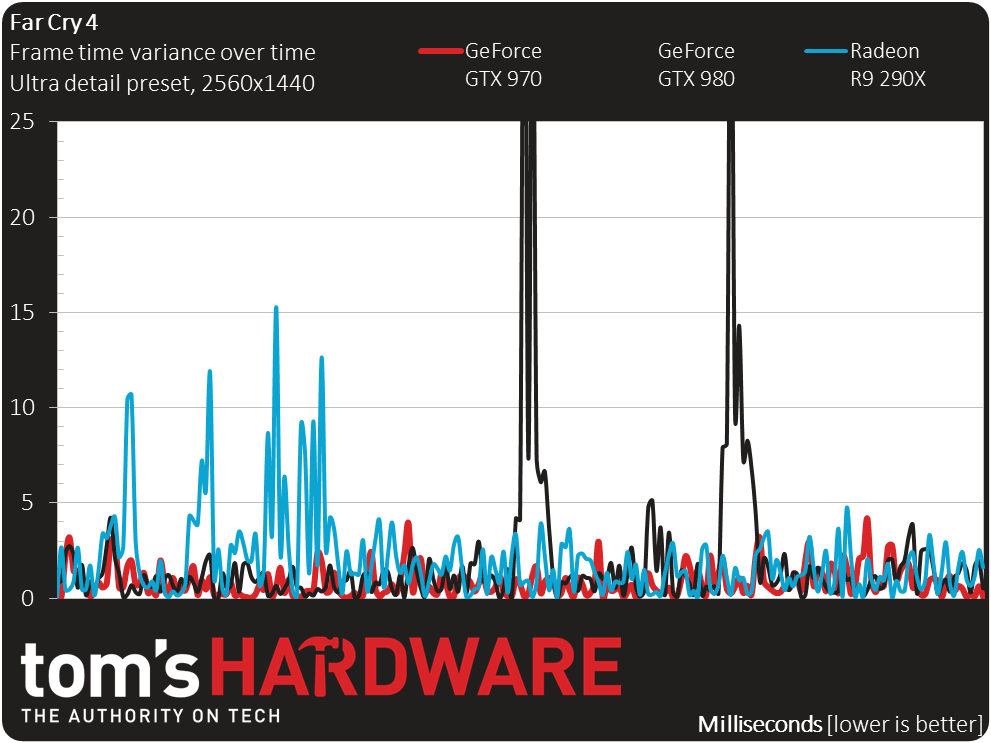
All three high-end graphics cards maintain a minimum of 30 FPS at this resolution, although the Radeon R9 290X exhibits substantially more frame time variance.
Ultra Details @ 2160p
Let's move on to our highest-resolution test at 3840x2160, more commonly referred to as 4K:
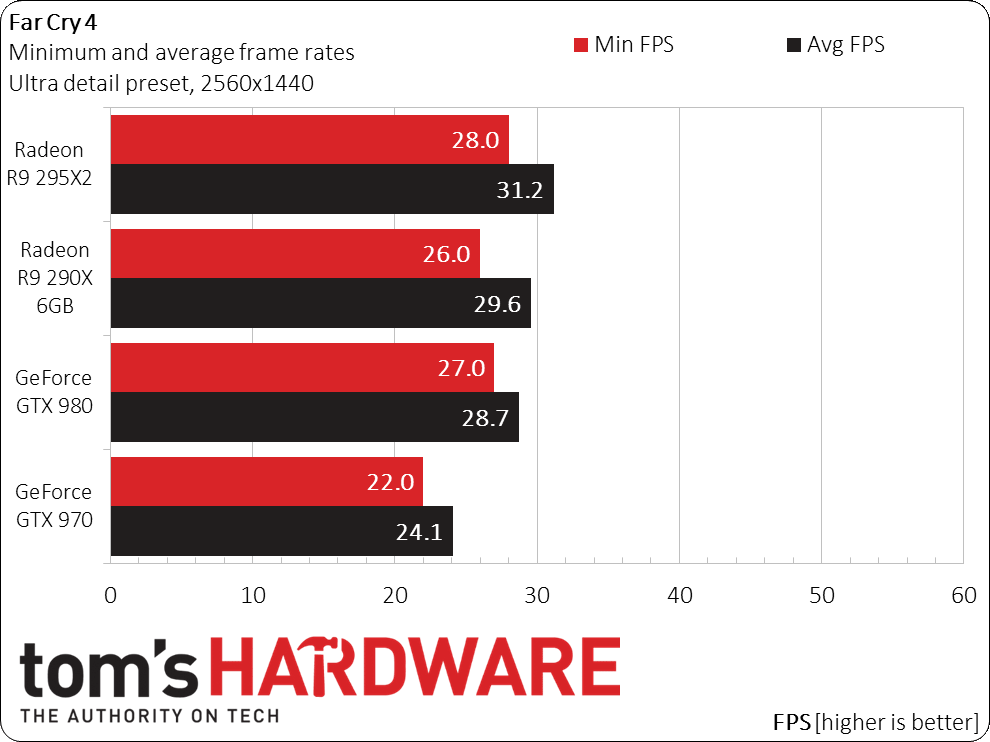
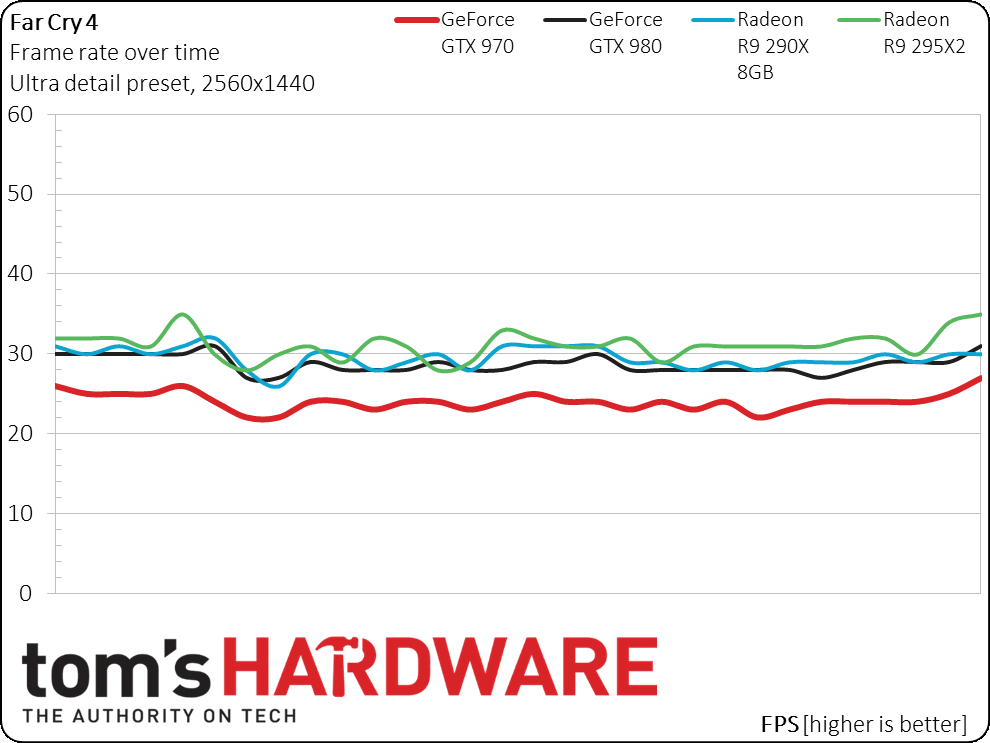
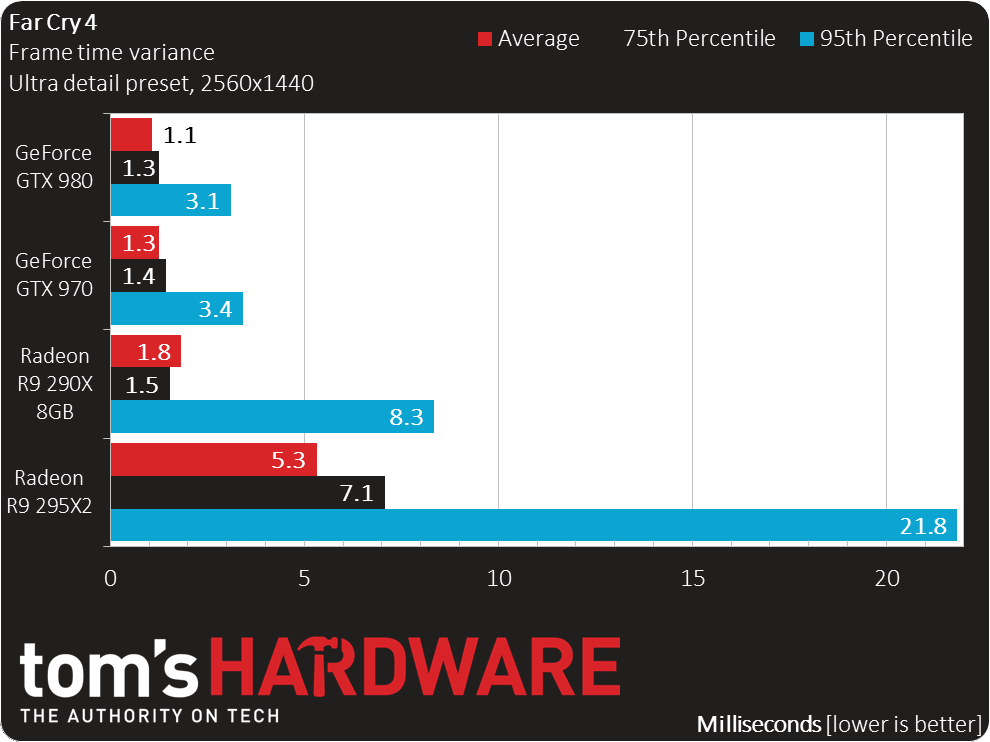
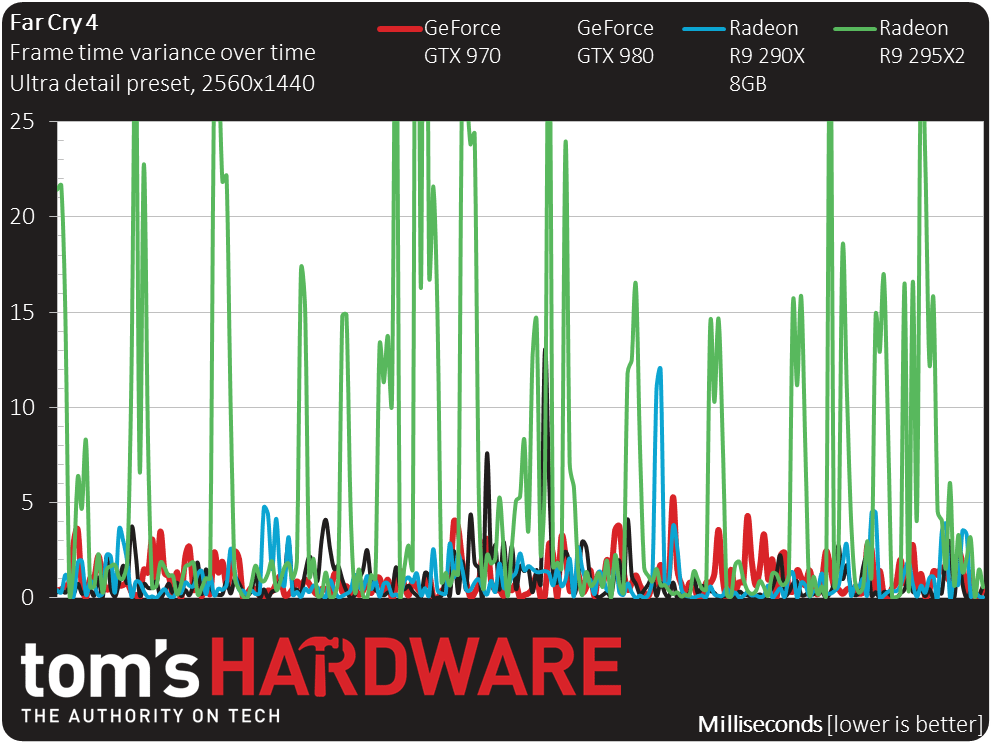
We gave our 8GB Radeon R9 290X sample a shot, though it doesn't look like the extra GDDR5 memory makes much of a difference. We also tried dual-GPU solutions, but were surprised to find that Nvidia's SLI technology doesn't seem to work with cards from different manufacturers, limiting us to single-GPU tests. The extra graphics processor didn't seem to help the Radeon R9 295X2 either, suggesting this game and the drivers supporting it aren't yet optimized.
As for results, the Radeon R9 290X and GeForce GTX 980 fall just below the 30 FPS minimum frame rate threshold. I consider them playable, but not especially smooth. Unfortunately, AMD's Radeon R9 295X2 suffers almost three times the frame time variance of a single Radeon R9 290X.
CPU Benchmarks
In our final benchmark, we consider CPU performance using the GeForce GTX 980 at 1920x1080 with ultra details enabled to see how the top detail level affects a variety of processors.
It's interesting that the Dunia 2 engine powering Far Cry 4 happily takes advantage of multiple execution cores (especially when it comes to AMD's FX series). But it's just as significant that the game enables a greater-than-30 FPS minimum on low-end CPUs like the FX-4170 and Core i3-3220.
Get Tom's Hardware's best news and in-depth reviews, straight to your inbox.
While your processor choice does have an effect on game performance, it doesn't look like the bottleneck is significant compared to your graphics card.
The Core i5 and Core i7 demonstrate a near-identical result, probably indicating that Far Cry 4 is graphics card-bottlenecked with these processors.
Current page: Results: 1440p, 4K And CPU
Prev Page Results: 720p And 1080p Next Page A Demanding Engine That Scales WellDon Woligroski was a former senior hardware editor for Tom's Hardware. He has covered a wide range of PC hardware topics, including CPUs, GPUs, system building, and emerging technologies.
-
Ellis_D Reply14935116 said:How much AA was used and what kind? None?
I'm assuming none since with my GTX 970 and i7 4790k, I was regularly bottoming out into the low-40s/upper-30s with SMAA enabled. -
johnnyb105 Kinda wondering why are they using a fx4170 and a 6300 WHEN THERE IS A FX 4350 AND 6350 CPU AND WHERE THE HECK IS THE 8350 AT???Reply -
stoned_ritual I have a gtx780 reference and an i5 4670k, I get BETTER framrates with SMAA enabled at 1080p than with 2xMSAA or the game-suggested level of 2xTXAA. I play this game on ultra. I do get fps drops in highly vegetated areas. The biggest performance gain is seen when I disable god rays.Reply -
Onus Hmmm, I got this game free with a 500GB Samsung 840 EVO. It will be the first shooter I've tried in years. I'm thinking my i5-3570K and HD7970 ought to manage "very high" reasonably well.Reply
-
magic couch The AMD drivers used were the 14.9 Omega drivers, but the omega drivers are 14.12, not 14.9. Is it supposed to say 14.12 or were the 14.9 drivers used?Reply -
airborn824 I am so BIASED. sigh what is this world coming to when we can trust nothing and no one for good info. I wanna see FX8350 with 290x with updated drivers and i5 4690 with GTX 9802 newest drivers so all of us can compare somewhat lolReply -
Cryio @ Johnny: FX 4170 for old gen high clocked quad.Reply
6300, 6350, same thing mostly.
You can OC an 8350 to that level of performance, so you can approximate. -
airborn824 THis game was so badly made. Why would there be such a difference in the CPU FPS? Sigh and very suprised such low FPS on the 295x2 which is the best money can buy these days. Very badly made game, glad i got it for FREE i would never buy it at its point now.Reply
